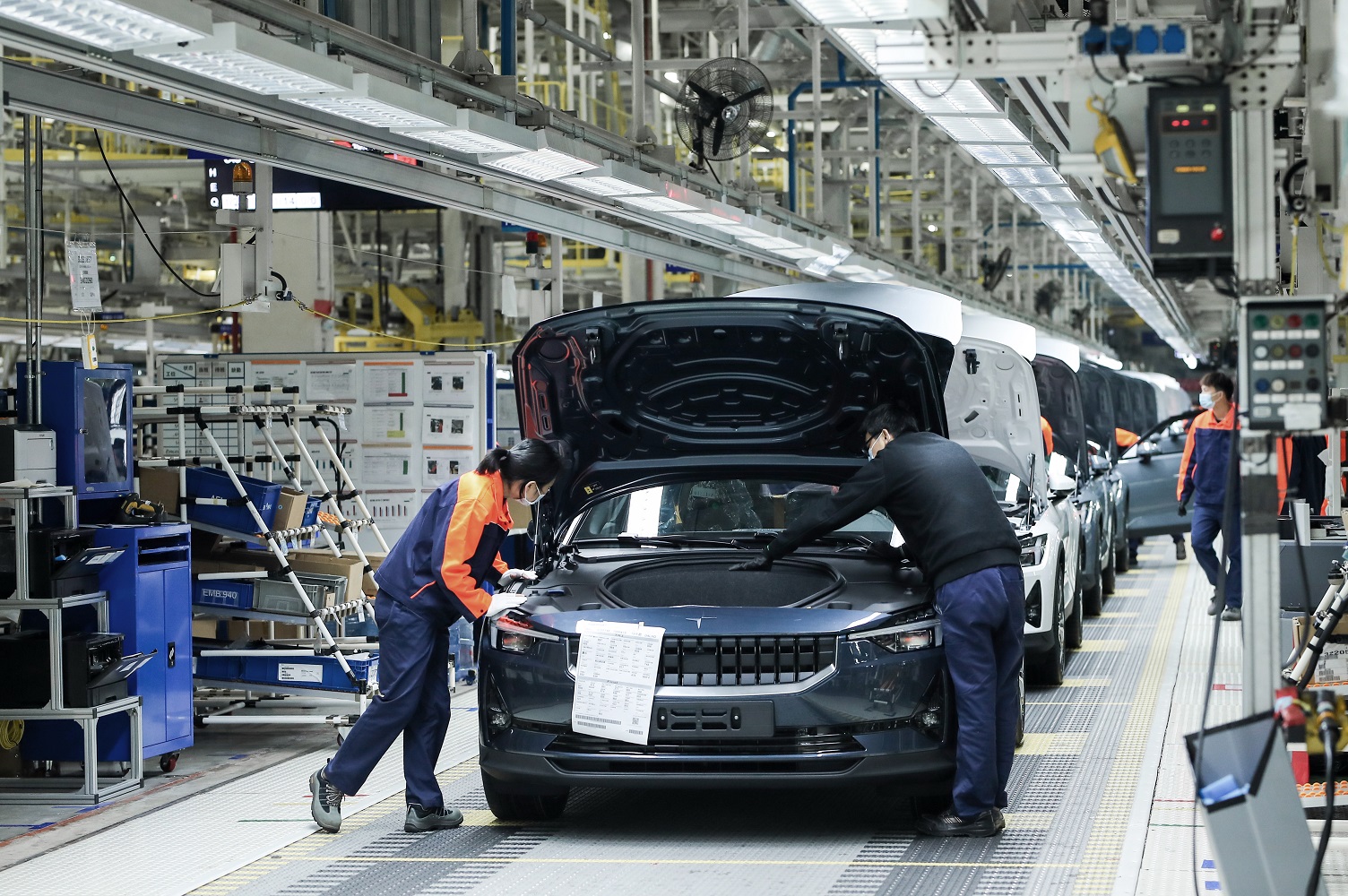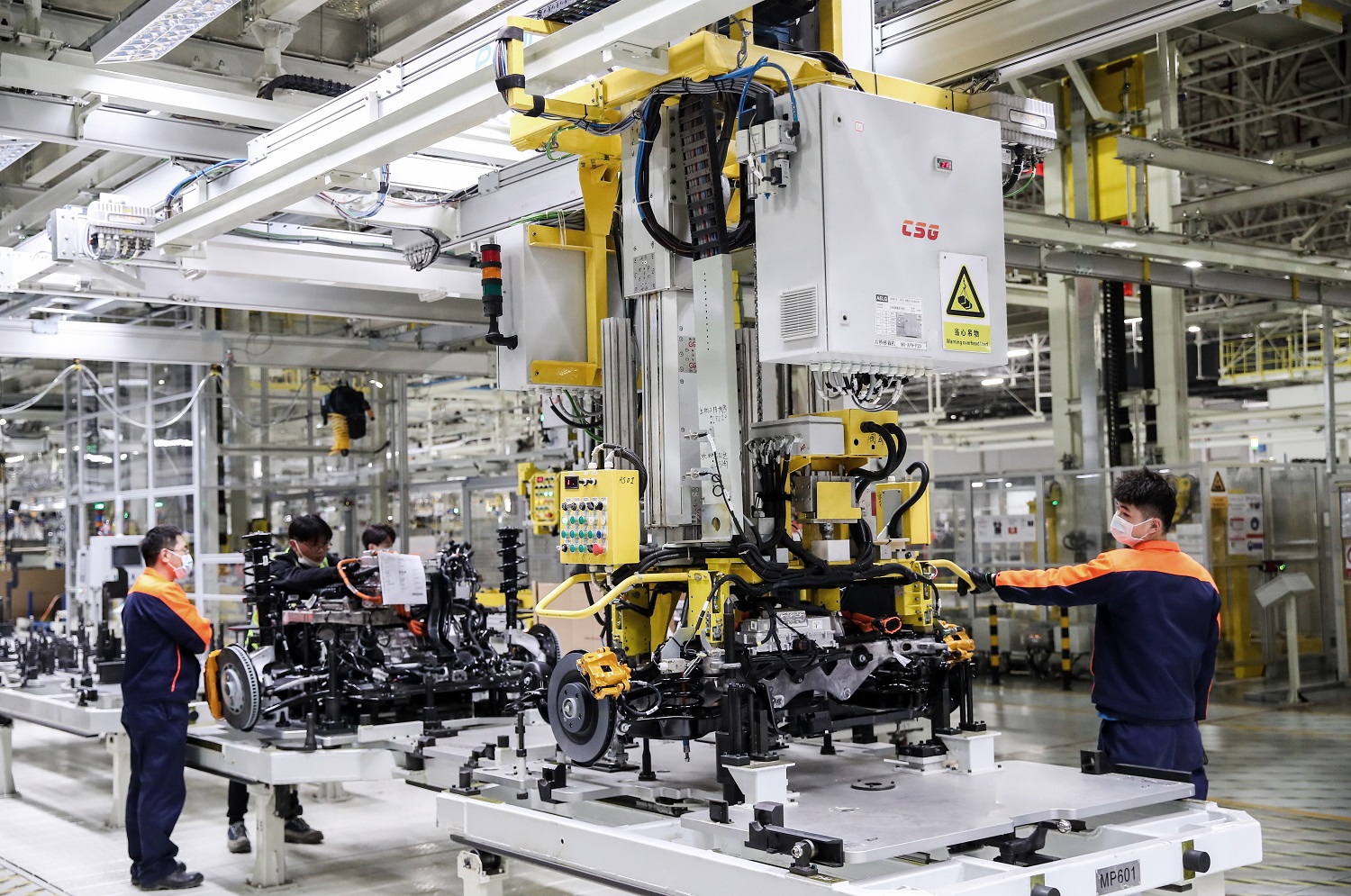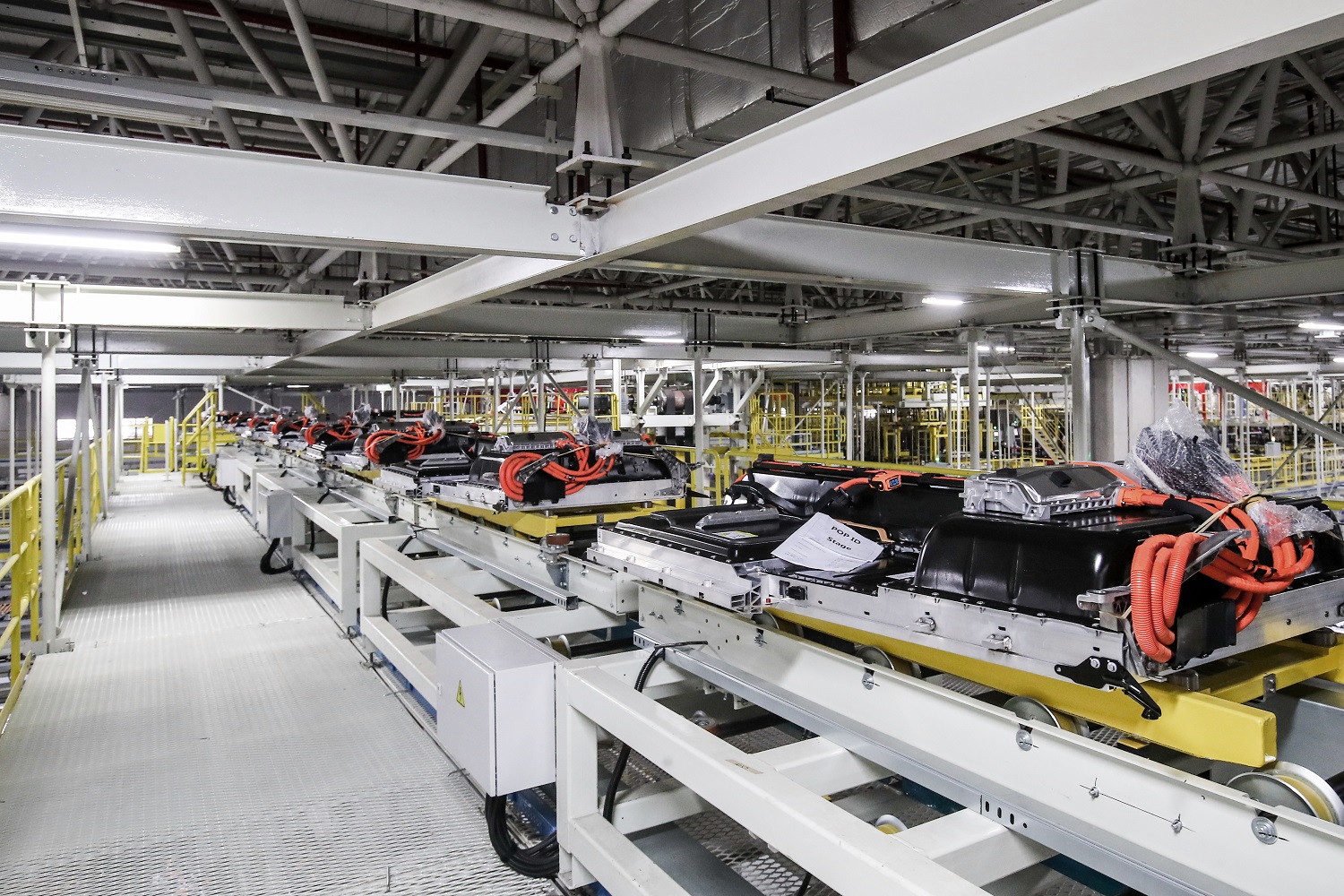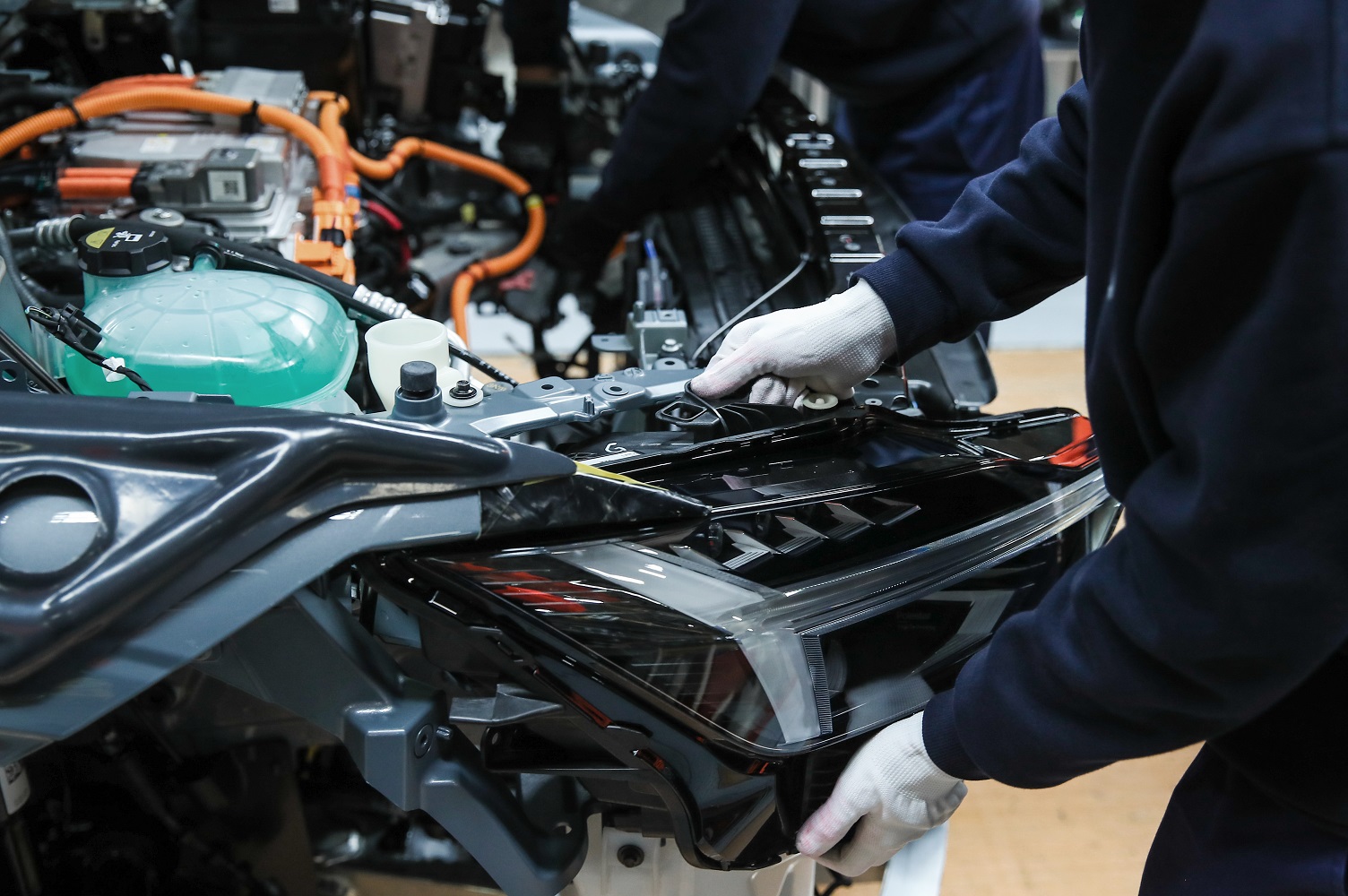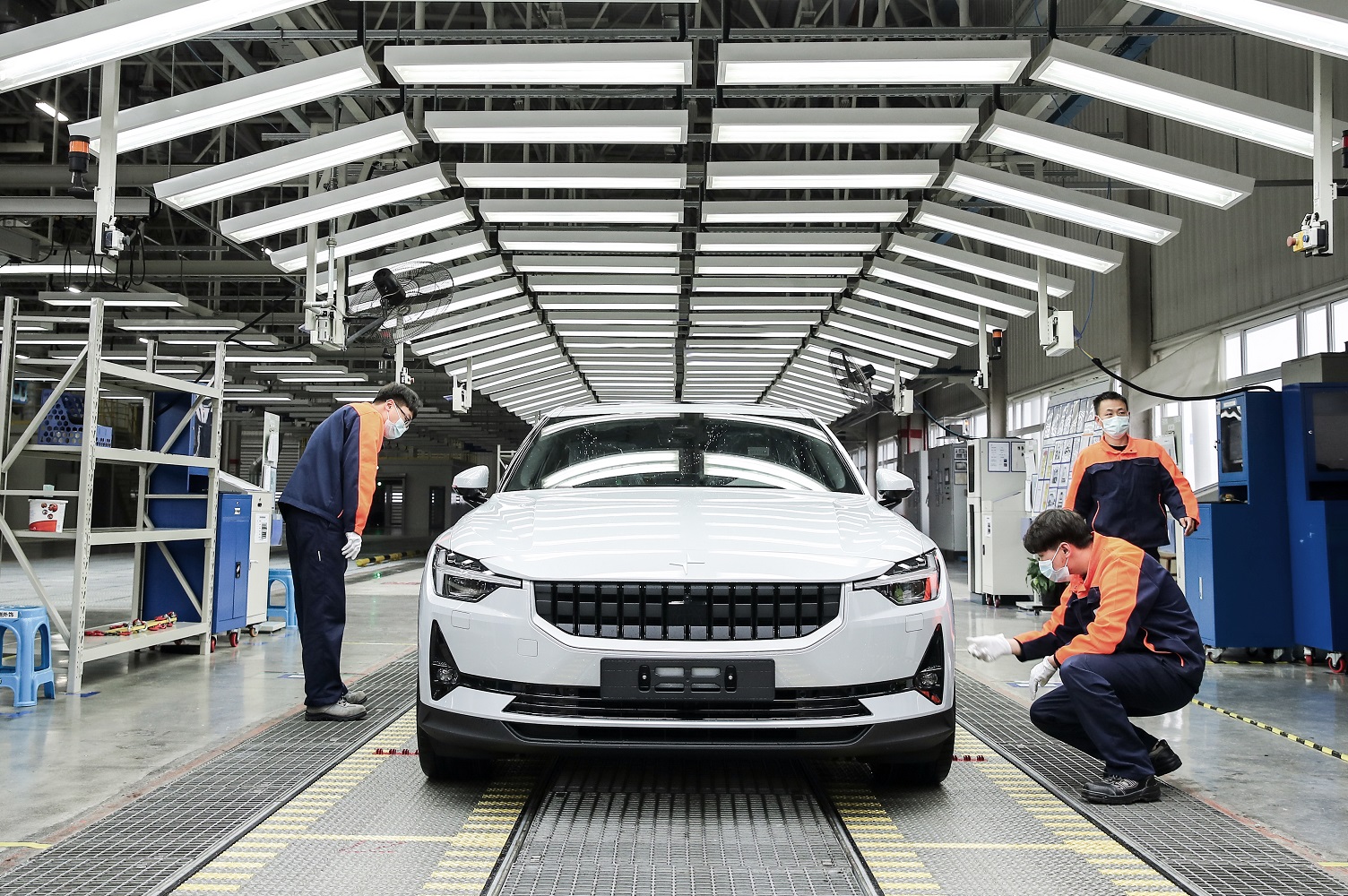Volvo-owned Polestar gave the entire automotive industry a small glimmer of hope by announcing it has launched production of its second model, the aptly-named 2, in a facility located in China. The announcement comes as numerous car factories in the United States and Europe are shuttered to slow the fast-spreading coronavirus.
Launching production in Luqiao, a coastal city located south of Shanghai, was easier said than done because China idled its industrial sector in early 2020 as it battled against the deadly coronavirus outbreak. The nation’s entire supply chain was disrupted for weeks on end but the Polestar team managed to quickly overcome these significant challenges and begin building the 2 right on schedule. “This is a great achievement and the result of huge efforts,” affirmed company CEO Thomas Ingenlath.
Polestar released five images to illustrate how the 2 comes to life. It’s built by mask-wearing workers in a clean, well-lit factory that also manufactures Volvo models for the local market and cars designed by Lynk & Co, another one of the automakers under the Geely umbrella. The company hasn’t revealed how many examples of the 2 it hopes to build annually, but it was developed as a relatively high-volume model aimed at premium electric sedans like the Tesla Model 3. In contrast, the 1, its first car, is a plug-in hybrid coupe limited to 1,500 units globally.
If the 2 looks familiar, it’s likely because it is related to the 40.2 concept Volvo introduced in 2016. It’s built on the same CMA platform as the XC40, but it is only available with a twin-motor electric powertrain whose output checks in at 408 horsepower and 487 pound-feet of torque. Electricity is stored in a 78-kilowatt-hour lithium-ion battery pack stuffed under the passenger compartment. Polestar quoted a 275-mile driving range and a 3,300-pound towing capacity. The latter figure is surprisingly high for an electric car in this segment of the market.
The first examples of the 2 will be sent to the European market in the summer of 2020; Polestar singled out big electric car markets like Norway, Sweden, Germany, the United Kingdom, Holland, and Belgium as its landing points on the Old Continent. It will begin building cars for the Chinese and American markets a little bit later in 2020. The first United States-bound examples will be delivered to reservation holders in California and in Washington.
